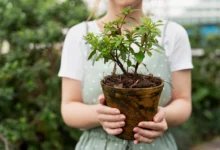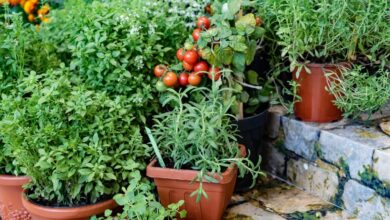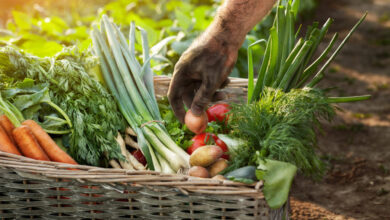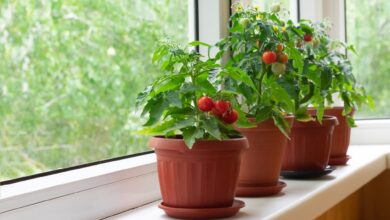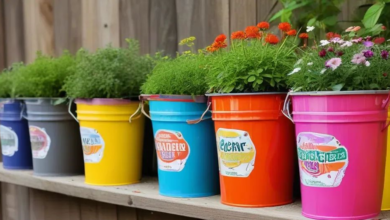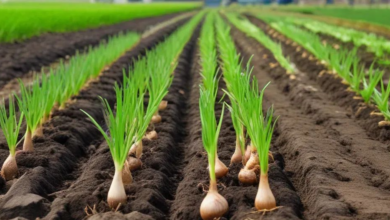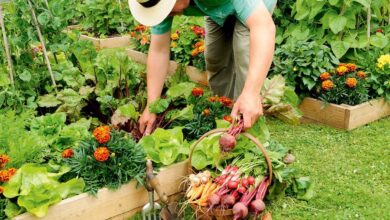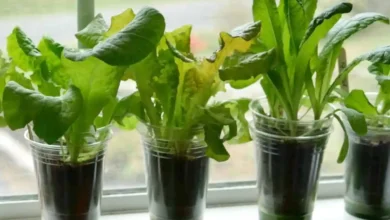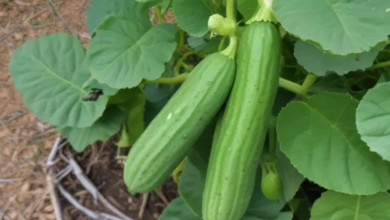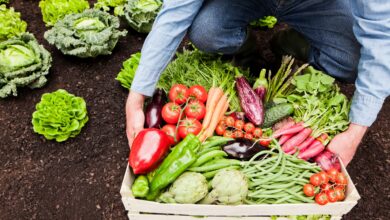Best Vegetables for Container Gardening on Balconies and Patios
Discover the best vegetables for container gardening on balconies and patios. Expert tips for growing fresh produce in small spaces with pots...

Urban living and limited outdoor space no longer mean sacrificing the joy of harvesting fresh, homegrown produce. Container gardening has revolutionized how city dwellers and apartment residents approach vegetable cultivation, transforming even the smallest balconies and patios into thriving edible gardens. Whether you’re working with a sun-drenched terrace or a modest apartment balcony, growing vegetables in containers offers unprecedented flexibility, accessibility, and satisfaction for gardeners of all experience levels.
The beauty of container vegetable gardening lies in its adaptability and practicality. Unlike traditional in-ground gardens that require yard space and extensive soil preparation, container gardens can be established virtually anywhere with adequate sunlight. This innovative gardening method allows you to control soil quality, manage water retention more efficiently, and relocate plants as seasons change or sunlight patterns shift throughout the year. For those living in urban environments where ground space is premium or non-existent, containers provide the perfect solution to cultivate fresh, organic vegetables right outside your door.
Patio vegetable gardening has gained tremendous popularity as more people recognize the numerous benefits it offers. Beyond the obvious advantage of fresh produce at your fingertips, container gardening reduces pest problems, minimizes soil-borne diseases, and eliminates the backbreaking work of tilling and weeding large garden plots. The portability of containers means you can optimize growing conditions by moving plants to follow the sun or protect them from harsh weather conditions. Additionally, container gardens are ideal for renters who want to garden without making permanent changes to their living space.
This comprehensive guide will explore the best vegetables for container gardening, providing you with expert insights on selecting the right varieties, choosing appropriate containers, understanding soil requirements, and mastering care techniques. Whether you’re a beginner taking your first steps into urban gardening or an experienced gardener adapting to a smaller space, you’ll discover practical strategies for maximizing your harvest while working with limited square footage. From compact cherry tomatoes to leafy greens and root vegetables, we’ll cover everything you need to transform your balcony or patio into a productive vegetable garden that yields fresh, nutritious food throughout the growing season.
Container Gardening Basics
What Makes Container Gardening Different
Container gardening fundamentally differs from traditional in-ground gardening in several critical ways that directly impact plant health and productivity. When growing vegetables in pots, you’re creating a completely controlled environment where every element—from soil composition to drainage—is within your management. Unlike garden beds that connect to the earth’s natural ecosystem, containers are isolated systems that depend entirely on you for nutrients, water, and optimal growing conditions.
The confined root space in container gardens means plants have limited access to resources, making container selection and soil quality paramount to success. Vegetable plants in containers typically require more frequent watering than their in-ground counterparts because pots dry out faster, especially in sunny locations common on balconies and patios. However, this limitation also provides advantages: you can easily refresh depleted soil, adjust pH levels, and prevent the spread of diseases that might otherwise contaminate an entire garden bed.
Essential Elements for Successful Container Vegetable Gardening
Creating a thriving container vegetable garden requires understanding and implementing several fundamental principles. First, drainage is absolutely critical—without proper drainage holes, excess water accumulates, leading to root rot and plant death. Every container must have adequate drainage, typically multiple holes in the bottom, to prevent waterlogging while maintaining consistent moisture levels.
Soil quality represents another crucial factor for container gardening success. Never use regular garden soil in containers; instead, invest in high-quality potting mix specifically formulated for container use. These specialized mixes contain ingredients like peat moss, perlite, and vermiculite that provide excellent drainage while retaining adequate moisture. The lightweight nature of potting soil also prevents compaction, ensuring roots can breathe and expand properly within the confined space.
Sunlight exposure determines which vegetables you can successfully grow in your space. Most vegetable plants require 6-8 hours of direct sunlight daily, though leafy greens tolerate partial shade. Before selecting vegetables, observe your balcony or patio throughout the day to understand sunlight patterns. South-facing locations typically receive the most sun, while north-facing spaces may be better suited for shade-tolerant crops.
Choosing the Right Containers for Your Vegetables
Container Size and Material Selection
The size and material of your containers significantly impact vegetable growth and your maintenance workload. Larger containers generally perform better because they hold more soil, which provides greater moisture retention and nutrient availability. As a general rule, bigger is better for container vegetable gardening—most vegetables thrive in containers holding at least 5 gallons of soil, though specific requirements vary by plant type.
Container materials each offer distinct advantages and considerations for balcony and patio gardens. Plastic containers are lightweight, affordable, and retain moisture well, making them ideal for windy balconies or situations where you need to move plants frequently. Terracotta pots provide excellent breathability and classic aesthetics but dry out quickly and can be heavy when filled with soil. Fabric grow bags have gained popularity for their superior drainage and air pruning properties, which prevent root circling and promote healthier root systems.
Wood containers offer natural insulation, protecting roots from temperature extremes common on sun-exposed patios. However, ensure wooden containers are made from untreated wood or lined with plastic to prevent chemical leaching into your soil. Metal containers create modern, stylish displays but can heat up excessively in direct sunlight, potentially damaging roots unless insulated or placed in partially shaded locations.
Drainage and Container Depth Requirements
Proper drainage cannot be overstated in container gardening—it’s the difference between thriving plants and disappointing failures. Every container needs multiple drainage holes, typically 1/2 inch in diameter, spaced evenly across the bottom. If using decorative pots without drainage, drill holes yourself or use them as cache pots with properly draining inner containers.
Different vegetables require varying container depths based on their root systems. Tomatoes, peppers, and eggplants need deep containers—at least 12-18 inches—to accommodate extensive root development. Lettuce, spinach, and other leafy greens can thrive in shallower containers of 6-8 inches. Root vegetables like carrots and radishes require depth proportional to their mature size—standard carrots need 12 inches minimum, while shorter varieties can grow in 6-8 inch deep containers.
Top 10 Best Vegetables for Container Gardening
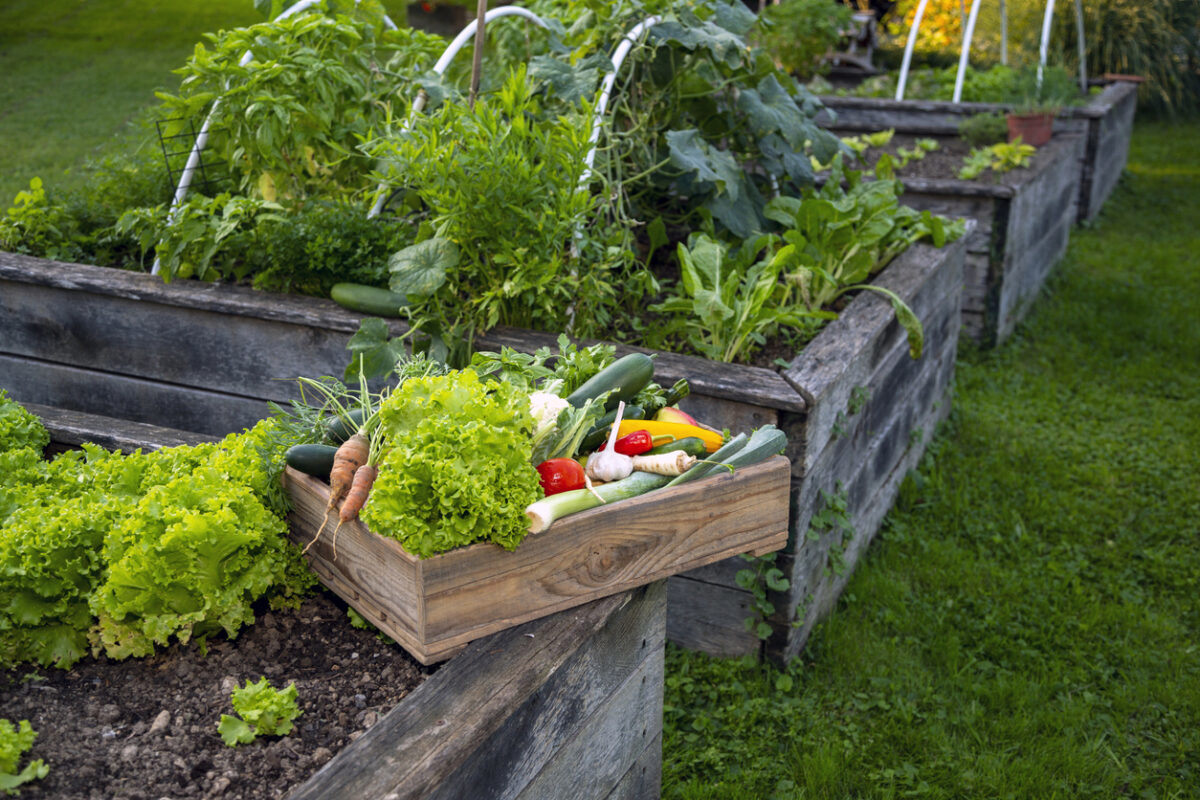
1. Tomatoes: The Container Garden Favorite
- Tomatoes reign supreme as the most popular vegetable for container gardening, and for good reason. These versatile plants adapt exceptionally well to pot culture, particularly determinate (bush) and compact cherry varieties bred specifically for container growing. Cherry tomatoes like ‘Sweet Million,’ ‘Tiny Tim,’ and ‘Tumbling Tom’ produce abundant harvests in containers as small as 5 gallons, though larger pots yield better results.
- Patio tomato gardening, select containers at least 14-18 inches deep and equally wide, providing ample room for root development. Use sturdy stakes or tomato cages for support, as even compact varieties need structural assistance when laden with fruit. Container-grown tomatoes require consistent watering—irregular moisture causes blossom end rot and fruit cracking. Apply balanced fertilizer every two weeks during the growing season, as tomatoes are heavy feeders that quickly deplete container nutrients.
Position your tomato containers where they receive 6-8 hours of direct sunlight daily. The beauty of container tomatoes is mobility—move plants to follow optimal sun exposure or protect them during extreme weather. Determinate varieties are particularly well-suited for balconies because they grow to a predetermined height, typically 2-4 feet, making them manageable in confined spaces.
2. Lettuce and Salad Greens: Perfect for Beginners
Lettuce and mixed salad greens represent ideal choices for beginner container gardeners and those seeking quick results. These fast-growing vegetables mature in just 30-45 days, providing nearly instant gratification. Loose-leaf varieties like ‘Black Seeded Simpson,’ ‘Red Sails,’ and mesclun mixes excel in containers because you can harvest outer leaves continuously while the plant continues producing.
The shallow root systems of salad greens mean they thrive in containers as modest as 6-8 inches deep, making them perfect for window boxes and small balcony spaces. Wide, shallow containers work beautifully for creating diverse salad gardens—plant multiple lettuce varieties together for a colorful, productive display that doubles as attractive foliage.
Container lettuce prefers cooler temperatures and can tolerate partial shade, making it versatile for various patio locations. In hot climates, position lettuce containers where they receive morning sun and afternoon shade to prevent bolting (premature flowering). Maintain consistently moist soil, as lettuce develops bitter flavor when water-stressed. Succession planting—sowing new seeds every 2-3 weeks—ensures continuous harvest throughout the growing season.
3. Peppers: Compact and Productive
Both sweet bell peppers and hot pepper varieties excel in container gardens, offering impressive yields from relatively compact plants. Peppers naturally possess bushy growth habits that translate perfectly to pot culture. Varieties like ‘Patio Belle,’ ‘Baby Belle,’ and ‘Jalapeno’ are specifically bred for container growing, though most standard pepper varieties adapt well when given adequate container size.
Container-grown peppers require pots at least 10-12 inches deep and wide, with 5-gallon containers being ideal. These heat-loving plants need warm soil to thrive, making them perfect for sunny patios and balconies where containers warm quickly. Position pepper pots where they receive 6-8 hours of direct sunlight for optimal fruit production.
Unlike tomatoes, peppers have moderate water needs—allow the top inch of soil to dry between waterings to encourage root development and prevent disease. Feed every two weeks with balanced fertilizer once plants begin flowering. Support may be necessary for plants heavy with fruit, particularly bell pepper varieties. The compact nature of pepper plants makes them excellent candidates for grouping multiple containers, creating an attractive and productive pepper garden in minimal space.
4. Radishes: Fast-Growing Root Vegetables
Radishes deliver unmatched speed and simplicity in container vegetable gardening, maturing in just 20-30 days from seed. These quick-growing root vegetables provide instant success for impatient gardeners and are perfect for teaching children about gardening. Varieties like ‘Cherry Belle,’ ‘French Breakfast,’ and ‘Easter Egg’ perform excellently in containers with depths of 6-12 inches depending on variety.
The key to successful container radishes lies in proper spacing and consistent moisture. Sow seeds 1-2 inches apart in well-draining potting mix, thinning seedlings to 2 inches apart once they emerge. Crowding causes small, misshapen roots, so don’t skip the thinning step. Radishes appreciate cooler weather and can be grown in partial shade, making them ideal for spring and fall patio gardens.
Maintain evenly moist soil throughout the growing period—fluctuating moisture produces pithy, woody radishes with poor flavor. The speed of radish growth makes them excellent for succession planting in containers, allowing continuous harvest. Additionally, use radishes as companion plants in larger containers with slower-growing vegetables like tomatoes, harvesting the radishes before the main crop needs the space.
5. Beans: Vertical Growing Opportunity
Beans offer exceptional productivity in limited space through vertical growing techniques perfect for balcony and patio gardens. Both bush beans and pole beans succeed in containers, though each type presents different advantages. Bush varieties like ‘Contender’ and ‘Provider’ stay compact (12-18 inches tall) and don’t require support, while pole beans like ‘Kentucky Wonder’ and ‘Scarlet Runner’ climb 6-8 feet, maximizing vertical space on balcony railings or trellises.
For bush beans, containers at least 8-10 inches deep work well, while pole beans benefit from deeper pots of 12 inches or more for stability. The vertical nature of pole beans makes them perfect for small patio spaces where floor area is limited but vertical space is available. Install sturdy supports like bamboo stakes, trellises, or utilize existing balcony railings to guide climbing varieties upward.
Container beans prefer warm soil and full sun exposure. Wait until all frost danger passes and soil warms to at least 60°F before planting. These nitrogen-fixing plants have modest fertilizer needs—excessive nitrogen produces lush foliage but reduced pod production. Water regularly to maintain even soil moisture, especially during flowering and pod development. Harvest beans regularly to encourage continued production throughout the season.
6. Cucumbers: Trailing or Vertical Options
- Cucumbers transform container gardens with their vigorous growth and abundant production. While standard cucumber varieties grow large, numerous compact and bush varieties like ‘Bush Pickle,’ ‘Patio Snacker,’ and ‘Spacemaster’ are specifically bred for container culture. These varieties maintain productive yields while occupying minimal space on patios and balconies.
- Container cucumbers require substantial pots—at least 5 gallons (12-14 inches deep) for bush varieties and larger for vining types. Install trellises or vertical supports to train vining cucumbers upward, dramatically increasing productivity per square foot. Vertical growing also improves air circulation, reducing disease pressure common in humid environments, and produces straighter, cleaner fruit that’s easier to harvest.
These water-loving plants need consistently moist soil and regular feeding to support rapid growth and fruiting. Cucumbers are particularly sensitive to water stress, which causes bitter fruit and reduced production. Apply mulch on the soil surface to conserve moisture and feed weekly with balanced fertilizer once flowering begins. Position cucumber containers in full sun locations where they receive 6-8 hours of direct light daily for optimal performance.
7. Spinach: Nutritious Leafy Green
Spinach excels in container gardens as a cool-season crop that tolerates partial shade better than most vegetables. This nutritious leafy green matures quickly (40-50 days) and can be harvested continuously by removing outer leaves while allowing the center to continue growing. Varieties like ‘Bloomsdale,’ ‘Tyee,’ and ‘Space’ perform excellently in containers with depths of 6-8 inches.
The versatility of container spinach allows cultivation in locations unsuitable for sun-loving crops. Position containers where they receive 3-6 hours of sunlight—in hot climates, afternoon shade actually benefits spinach by preventing premature bolting. Wide, shallow containers maximize planting area for these compact plants. Consider window boxes or rectangular planters that fit efficiently on balcony rails or narrow patio spaces.
Spinach thrives in cooler temperatures (50-70°F), making it ideal for spring and fall container gardening in most climates. In mild winter regions, grow spinach through winter months in containers. Maintain consistently moist soil and feed monthly with nitrogen-rich fertilizer to encourage lush leaf production. Succession planting every 2-3 weeks extends harvest over several months before heat triggers bolting.
8. Carrots: Rewarding Root Crop
Carrots challenge the misconception that root crops can’t succeed in containers. With proper variety selection and adequate container depth, container-grown carrots produce sweet, crunchy roots rivaling those from garden beds. The key is choosing appropriate varieties—shorter types like ‘Paris Market,’ ‘Thumbelina,’ and ‘Romeo’ need only 6-8 inches of depth, while standard varieties like ‘Nantes’ and ‘Danvers’ require 12 inches or deeper.
Success with container carrots depends heavily on soil quality. Use light, loose potting mix free from clumps, stones, or debris that might cause forked or twisted roots. Never use garden soil, which compacts in containers and prevents proper root development. Mix in extra sand or perlite to ensure optimal texture for straight, well-formed carrots.
Sow carrot seeds directly in containers—these root crops don’t transplant well. Thin seedlings to 2-3 inches apart once they develop true leaves, as crowding produces small, misshapen roots. Carrots require consistent moisture throughout development; fluctuating water causes cracking and splitting. These relatively low-maintenance plants need minimal fertilization—excessive nitrogen produces lush foliage but poor root development. Position containers in full sun for best results, though carrots tolerate partial shade.
9. Eggplant: Heat-Loving Producer
Eggplant thrives in container gardens on warm, sunny patios and balconies. These heat-loving plants produce impressive yields when given adequate growing conditions. Compact varieties like ‘Fairy Tale,’ ‘Patio Baby,’ and ‘Hansel’ are specifically developed for container culture, reaching manageable heights of 18-24 inches while producing numerous fruits.
Choose large containers—at least 5 gallons (12-14 inches deep and wide)—for container eggplant success. These substantial plants develop extensive root systems and benefit from the increased soil volume larger pots provide. Position containers in the hottest, sunniest location available, as eggplants need 6-8 hours of direct sunlight and warm temperatures for optimal fruit set and development.
Container-grown eggplant requires consistent care for peak performance. Maintain evenly moist soil and feed every two weeks with balanced fertilizer once flowering begins. Support may be necessary when plants become laden with fruit—use stakes or small cages to prevent branches from breaking. Monitor for common pests like flea beetles and aphids, which can quickly damage foliage. Start eggplant seeds indoors 6-8 weeks before the last frost date, or purchase transplants, as these plants need warm soil and won’t tolerate cold temperatures.
10. Herbs: Essential Container Companions
While technically not vegetables, herbs deserve prominent mention in any discussion of container gardening for their culinary value and companion planting benefits. Herbs like basil, parsley, cilantro, thyme, and oregano thrive in containers, often performing better in pots than in garden beds. Most herbs have compact root systems requiring only 6-8 inch deep containers, making them perfect for small balcony spaces and windowsills.
Container herb gardens offer incredible convenience—snip fresh herbs directly from your patio while cooking. Many herbs also benefit vegetable plants through companion planting. Basil near tomatoes may improve flavor and repel pests, while aromatic herbs like rosemary and thyme can deter various insects. Plant herbs in dedicated containers or tuck them around the edges of larger vegetable containers.
Most herbs prefer full sun exposure (6-8 hours daily) and well-draining soil. Mediterranean herbs like rosemary, thyme, and oregano tolerate drier conditions, while basil, parsley, and cilantro appreciate consistently moist soil. Harvest herbs regularly to encourage bushy growth and prevent flowering, which can diminish flavor. The compact nature and attractive foliage of herbs make them excellent choices for creating beautiful, productive container arrangements on balconies and patios.
Essential Soil and Fertilizer Requirements
Selecting the Right Potting Mix
Potting mix quality directly determines the success or failure of your container vegetable garden. Never use garden soil or topsoil in containers—these heavy materials compact quickly, restricting root growth and creating drainage problems. Instead, invest in premium potting soil specifically formulated for container use. Quality mixes typically contain peat moss or coconut coir for moisture retention, perlite or vermiculite for drainage and aeration, and often include compost or other organic matter for nutrients.
For vegetable container gardening, choose potting mixes designed for edibles rather than ornamental plants. Vegetable-specific mixes often include beneficial microorganisms, mycorrhizae, and slow-release fertilizers that support productive growth. Some gardeners create custom mixes by combining equal parts quality potting soil, compost, and perlite or vermiculite—this provides excellent drainage while maintaining moisture and nutrients.
Avoid reusing old potting soil season after season without amendment. After one growing season, container soil becomes depleted of nutrients, may harbor disease pathogens, and loses its structural integrity. Refresh containers annually by removing old soil, cleaning pots thoroughly, and filling with fresh potting mix. Alternatively, rejuvenate used soil by mixing it 50/50 with fresh potting mix and adding compost and slow-release fertilizer.
Fertilization Strategies for Container Vegetables
Container vegetables require regular fertilization because frequent watering leaches nutrients from the confined soil volume. Unlike in-ground gardens where plants access nutrients from surrounding soil, container plants depend entirely on what you provide. Develop a consistent fertilization schedule to maintain healthy, productive plants throughout the growing season.
Two main fertilization approaches work well for container vegetable gardens: slow-release granular fertilizers and water-soluble liquid feeds. Slow-release fertilizers mixed into potting soil at planting provide steady nutrition for 2-3 months. Supplement with liquid fertilizers every 1-2 weeks during peak growing periods. Look for balanced formulations (like 10-10-10) for most vegetables, or specialized tomato and vegetable fertilizers with micronutrients.
Organic options include compost tea, fish emulsion, and seaweed extracts, which provide nutrients while improving soil biology. Apply liquid fertilizers at half-strength more frequently rather than full-strength less often—this prevents nutrient burn while ensuring consistent availability. Adjust fertilization based on plant performance: yellowing leaves may indicate nitrogen deficiency, while poor flowering suggests phosphorus needs. Monitor your container vegetables and respond to their nutrient requirements for optimal growth and production.
Watering Techniques for Container Gardens
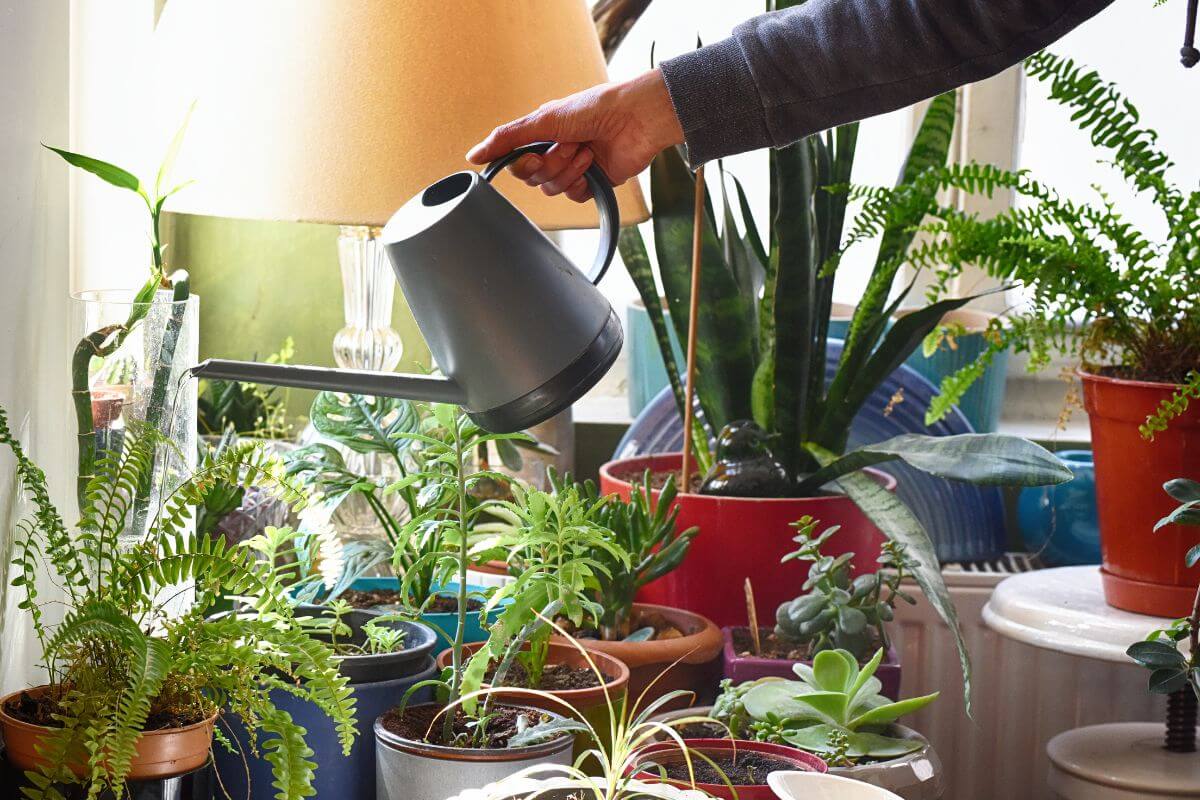
Container Water Needs
- Watering container gardens presents unique challenges compared to in-ground gardening. Containers dry out significantly faster than garden beds because roots can’t access moisture beyond the pot’s boundaries, and increased air exposure accelerates evaporation. Hot, sunny balconies and patios intensify this effect, sometimes requiring daily or even twice-daily watering during peak summer heat.
- Container size dramatically impacts watering frequency—larger pots hold more soil and therefore more moisture, reducing watering frequency. Small containers may require water twice daily during hot weather, while large containers might need water every 2-3 days. Plant size and type also influence water needs: large, leafy plants like tomatoes and cucumbers consume more water than compact herbs or lettuce.
Check soil moisture before watering by inserting your finger 2 inches into the soil. If it feels dry at that depth, water thoroughly. Never water on a predetermined schedule without checking soil moisture—overwatering is as harmful as underwatering and causes root rot, fungal diseases, and nutrient leaching. Different vegetables in containers have varying water preferences: tomatoes and cucumbers need consistent moisture, while peppers and herbs tolerate slightly drier conditions between waterings.
Efficient Watering Methods
Implement efficient watering techniques to conserve water and maintain plant health in your container garden. Water directly at the soil level rather than overhead to minimize evaporation, prevent foliar diseases, and ensure water reaches roots where it’s needed. Use watering wands with gentle shower settings or watering cans with narrow spouts for precision application around plant bases.
Water thoroughly until excess drains from container bottoms—shallow watering encourages surface roots that are vulnerable to heat and drought stress. Deep watering promotes deeper root growth, creating more resilient plants. After watering, allow containers to drain completely and never let pots sit in standing water, which suffocates roots and promotes disease.
For busy schedules or vacation periods, consider self-watering containers with built-in reservoirs that provide consistent moisture for several days. Drip irrigation systems with timers offer automated watering solutions perfect for balcony and patio gardens, ensuring plants receive precise amounts on schedule. Mulching the soil surface with compost, straw, or shredded bark reduces evaporation, keeps roots cool, and decreases watering frequency—particularly valuable for exposed patio containers in hot climates.
Maximizing Sunlight and Space
Assessing Your Balcony or Patio Sunlight
Sunlight assessment is critical before establishing your container vegetable garden. Most vegetables require 6-8 hours of direct sunlight daily for optimal production, though some tolerate partial shade. Spend several days observing your balcony or patio to understand light patterns—morning sun differs significantly from afternoon sun, and both vary seasonally as the sun’s path changes.
South-facing locations in the Northern Hemisphere receive the most intense, longest-duration sunlight, ideal for sun-loving crops like tomatoes, peppers, and eggplants. East-facing spaces get morning sun, which is gentler and works well for lettuce and leafy greens that prefer cooler conditions. West-facing areas receive hot afternoon sun, suitable for heat-tolerant vegetables but challenging for cool-season crops. North-facing spaces receive limited direct sun and are best suited for shade-tolerant greens and herbs.
Buildings, trees, and other structures create shade patterns that shift throughout the day and across seasons. What receives full sun in summer might be shaded in spring or fall when the sun’s angle changes. Consider these variations when selecting vegetables for container gardening and positioning pots. The mobility of containers allows you to adjust placement seasonally or even daily to optimize light exposure.
Space-Saving Growing Techniques
- Vertical gardening revolutionizes small balcony and patio spaces by growing upward instead of outward. Install trellises, stakes, or wall-mounted systems to support vining vegetables like cucumbers, pole beans, and indeterminate tomatoes. Vertical structures can also hold multiple tiers of smaller containers, multiplying your growing area without increasing floor space. Balcony railings make excellent supports for lightweight trellises or hanging planters.
- Succession planting maximizes container productivity by planting crops in stages. Once you harvest quick-growing vegetables like radishes or lettuce, immediately replant the container with another crop. This continuous rotation keeps containers productive throughout the season rather than sitting empty after a single harvest. Plan your planting schedule to maintain ongoing production of your favorite vegetables.
- Companion planting in containers allows growing multiple compatible vegetables together. Plant quick-maturing crops like radishes or lettuce around the base of slower-growing tomatoes or peppers—harvest the fast crops before they compete with main plants. Combine herbs with vegetables for pest deterrence and efficient space use. However, avoid overcrowding—adequate spacing ensures all plants receive sufficient light, nutrients, and air circulation to thrive.
Common Challenges and Solutions
Managing Pests in Container Gardens
While container gardens typically experience fewer pest problems than in-ground gardens, vigilance remains important. Aphids, whiteflies, and spider mites can still find container vegetables on balconies and patios. The isolation of containers actually offers advantages—you can more easily inspect plants, identify problems early, and treat individual containers without affecting your entire garden.
Implement preventive pest management by regularly inspecting plants, especially leaf undersides where many pests hide. Remove damaged leaves promptly and keep the area around containers clean of debris where pests might harbor. Encourage beneficial insects like ladybugs and lacewings by including flowering herbs in your container garden. These natural predators control aphid and other pest populations without chemical intervention.
When pests appear, start with the least toxic control methods. Strong water sprays dislodge many soft-bodied insects like aphids. Insecticidal soaps effectively control various pests while remaining safe for vegetables. Neem oil provides broader spectrum control for stubborn infestations. For severe problems, consider biological controls like Bacillus thuringiensis (Bt) for caterpillars or beneficial nematodes for soil-dwelling pests. Always follow label instructions and observe harvest intervals for any treatments applied to edible crops.
Disease Prevention and Management
Disease prevention begins with proper container gardening practices. Ensure excellent drainage in all containers, as waterlogged soil promotes fungal diseases like root rot and damping off. Avoid overhead watering, which leaves foliage wet and vulnerable to fungal and bacterial infections. Water early in the day so any splashed foliage dries quickly. Space containers adequately to promote air circulation, reducing humidity that favors disease development.
Use only fresh, sterile potting mix in containers and clean pots thoroughly between plantings with a 10% bleach solution to eliminate disease pathogens. Remove diseased plant material immediately and dispose of it in the trash—never compost diseased plants, as home composting may not generate sufficient heat to kill pathogens. Rotate crops in containers annually, avoiding planting the same vegetable family in the same pot consecutive years.
When disease strikes despite preventive measures, identify the specific problem to implement appropriate treatment. Powdery mildew appears as white, powdery coating on leaves and responds to treatments like baking soda solution or sulfur-based fungicides. Blight causes dark spots on tomato foliage and requires removing affected leaves and applying copper-based fungicides. Early detection and quick action prevent disease spread to other containers in your balcony or patio garden.
Seasonal Considerations for Year-Round Growing
Spring and Summer Container Gardening
Spring container gardening begins once frost danger passes and soil temperatures warm adequately for your chosen vegetables. Cool-season crops like lettuce, spinach, and radishes can start earlier when temperatures range from 45-75°F. These vegetables actually prefer cooler spring conditions and may bolt (flower prematurely) when summer heat arrives. Plant them as early as possible to maximize production before temperatures climb.
Warm-season vegetables including tomatoes, peppers, cucumbers, and eggplants need warm soil and air temperatures to thrive. Wait until nighttime temperatures consistently stay above 50°F before planting these heat-lovers in your patio containers. Starting seeds indoors 6-8 weeks before the last frost date gives plants a head start, allowing earlier harvests once they move outdoors.
Summer container maintenance intensifies as heat and plant size increase. Watering frequency escalates—check containers daily and water as needed, potentially twice daily during extreme heat. Fertilization becomes more important as rapidly growing plants consume nutrients quickly. Provide afternoon shade for heat-sensitive crops like lettuce if possible, or focus on heat-tolerant vegetables during peak summer months. Regular harvesting encourages continued production and prevents plants from putting energy into seed formation.
Fall and Winter Container Options
Fall container gardening offers a second growing season for cool-season vegetables in most climates. As summer heat subsides, replant containers with lettuce, spinach, radishes, and other greens that struggled in summer temperatures. These crops often produce better quality in fall’s cooler conditions with fewer pest pressures. Start fall plantings 6-8 weeks before your first expected frost date.
In mild winter climates (USDA zones 8-10), continue container vegetable gardening year-round with appropriate crop selection. Winter crops include kale, collards, Swiss chard, and certain lettuce varieties bred for cold tolerance. Protect containers from hard freezes by moving them against building walls where they benefit from radiant heat, or wrap pots with insulation material to prevent root damage from freezing temperatures.
For cold winter regions, extend your growing season using season extension techniques. Move containers into unheated garages or covered patios during cold snaps, or create simple cold frames over container groups. Some container gardeners bring pots indoors to sunny windows, though indoor growing requires supplemental lighting for most vegetables. Alternatively, focus on spring/summer/fall growing and rest during winter, using this time for planning and preparing for the next season.
Also Read: Best Vegetables to Plant in Fall
Conclusion
Container gardening opens limitless possibilities for growing fresh, nutritious vegetables even in the most space-limited urban environments. Whether working with a spacious patio or compact balcony, the best vegetables for container gardening—including tomatoes, lettuce, peppers, beans, and cucumbers—deliver impressive harvests when provided with appropriate containers, quality potting soil, adequate sunlight, and consistent care. The flexibility of container vegetable gardens allows gardeners to overcome traditional limitations like poor soil quality, limited yard space, or rental restrictions, bringing the satisfaction of homegrown produce within reach of anyone with outdoor space and determination.
By implementing the techniques and selecting suitable varieties outlined in this guide, you can transform your balcony or patio into a productive edible garden that provides fresh vegetables throughout the growing season. Start small with beginner-friendly options like lettuce and radishes, gradually expanding your container garden as you gain confidence and experience. The rewards of harvesting sun-warmed tomatoes or crisp lettuce just steps from your kitchen make every effort worthwhile, proving that successful vegetable gardening requires not acres of land, but simply the right knowledge, proper containers, and commitment to nurturing your plants from seed to harvest.

